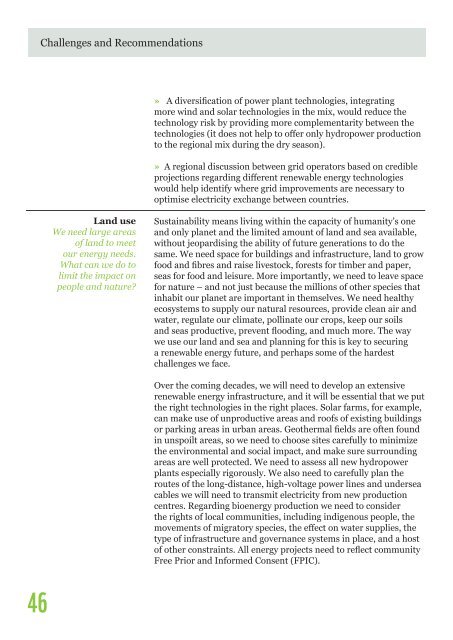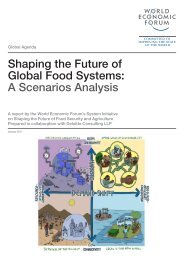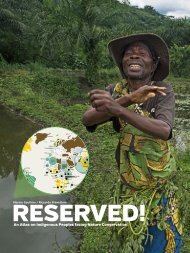Vision 2050
wwf_greater_mekong_power_sector_vision_2050
wwf_greater_mekong_power_sector_vision_2050
Create successful ePaper yourself
Turn your PDF publications into a flip-book with our unique Google optimized e-Paper software.
Challenges and Recommendations<br />
» A diversification of power plant technologies, integrating<br />
more wind and solar technologies in the mix, would reduce the<br />
technology risk by providing more complementarity between the<br />
technologies (it does not help to offer only hydropower production<br />
to the regional mix during the dry season).<br />
» A regional discussion between grid operators based on credible<br />
projections regarding different renewable energy technologies<br />
would help identify where grid improvements are necessary to<br />
optimise electricity exchange between countries.<br />
Land use<br />
We need large areas<br />
of land to meet<br />
our energy needs.<br />
What can we do to<br />
limit the impact on<br />
people and nature?<br />
Sustainability means living within the capacity of humanity’s one<br />
and only planet and the limited amount of land and sea available,<br />
without jeopardising the ability of future generations to do the<br />
same. We need space for buildings and infrastructure, land to grow<br />
food and fibres and raise livestock, forests for timber and paper,<br />
seas for food and leisure. More importantly, we need to leave space<br />
for nature – and not just because the millions of other species that<br />
inhabit our planet are important in themselves. We need healthy<br />
ecosystems to supply our natural resources, provide clean air and<br />
water, regulate our climate, pollinate our crops, keep our soils<br />
and seas productive, prevent flooding, and much more. The way<br />
we use our land and sea and planning for this is key to securing<br />
a renewable energy future, and perhaps some of the hardest<br />
challenges we face.<br />
Over the coming decades, we will need to develop an extensive<br />
renewable energy infrastructure, and it will be essential that we put<br />
the right technologies in the right places. Solar farms, for example,<br />
can make use of unproductive areas and roofs of existing buildings<br />
or parking areas in urban areas. Geothermal fields are often found<br />
in unspoilt areas, so we need to choose sites carefully to minimize<br />
the environmental and social impact, and make sure surrounding<br />
areas are well protected. We need to assess all new hydropower<br />
plants especially rigorously. We also need to carefully plan the<br />
routes of the long-distance, high-voltage power lines and undersea<br />
cables we will need to transmit electricity from new production<br />
centres. Regarding bioenergy production we need to consider<br />
the rights of local communities, including indigenous people, the<br />
movements of migratory species, the effect on water supplies, the<br />
type of infrastructure and governance systems in place, and a host<br />
of other constraints. All energy projects need to reflect community<br />
Free Prior and Informed Consent (FPIC).<br />
46




